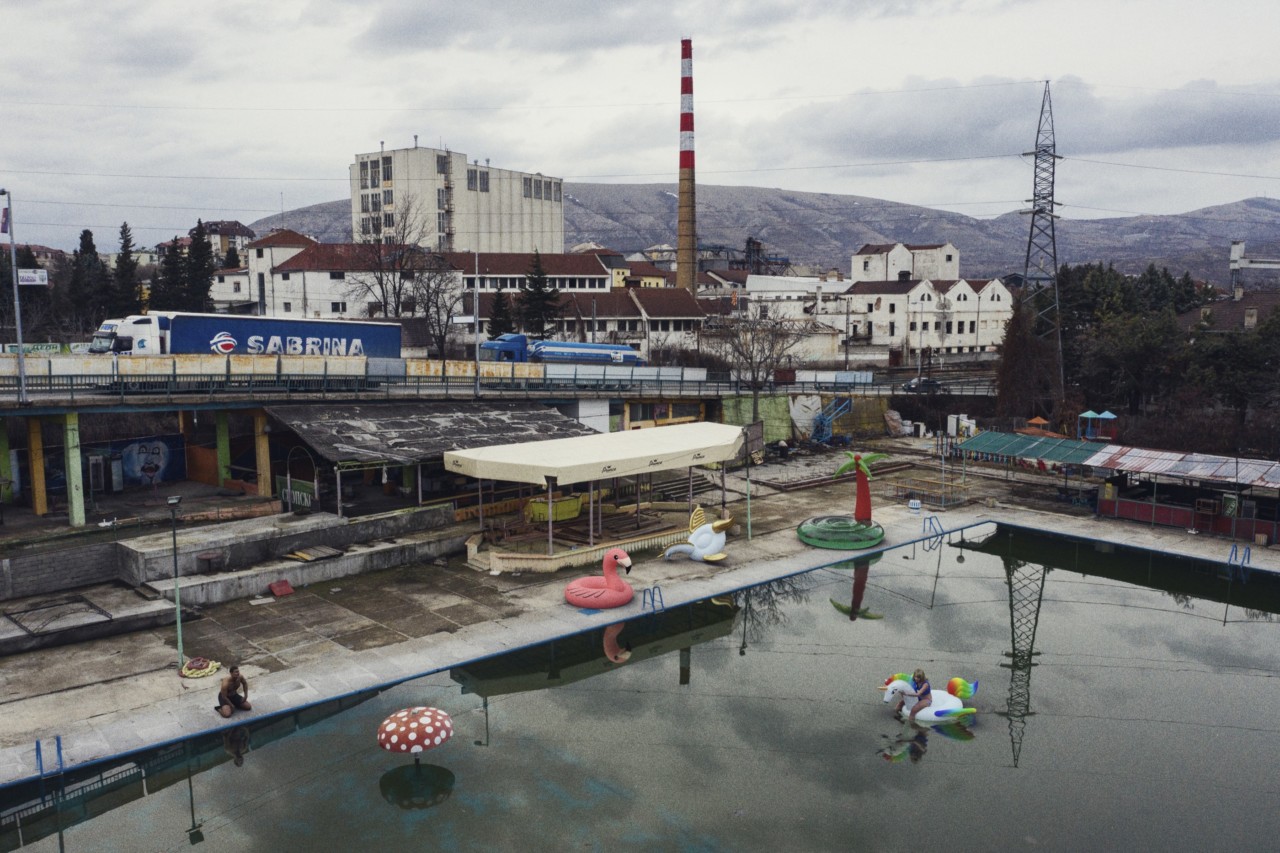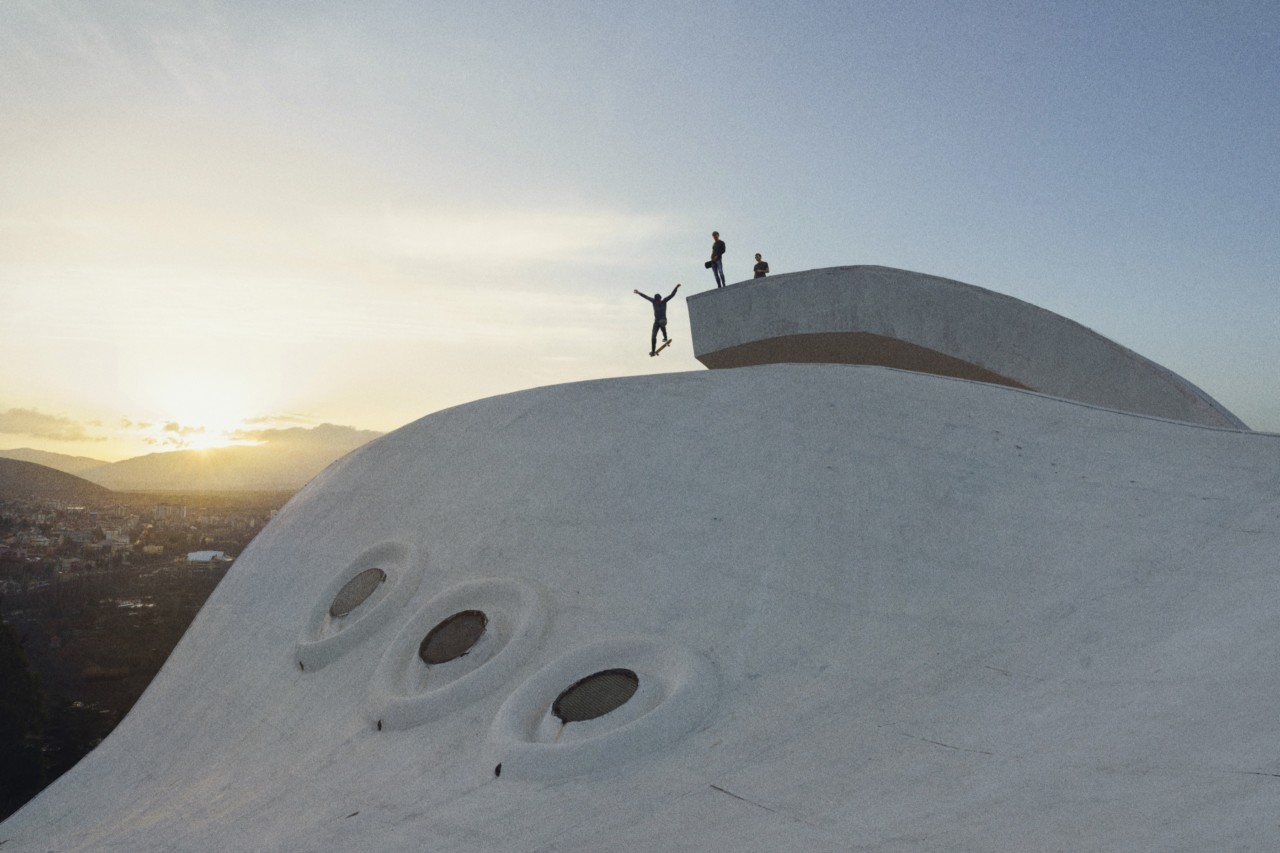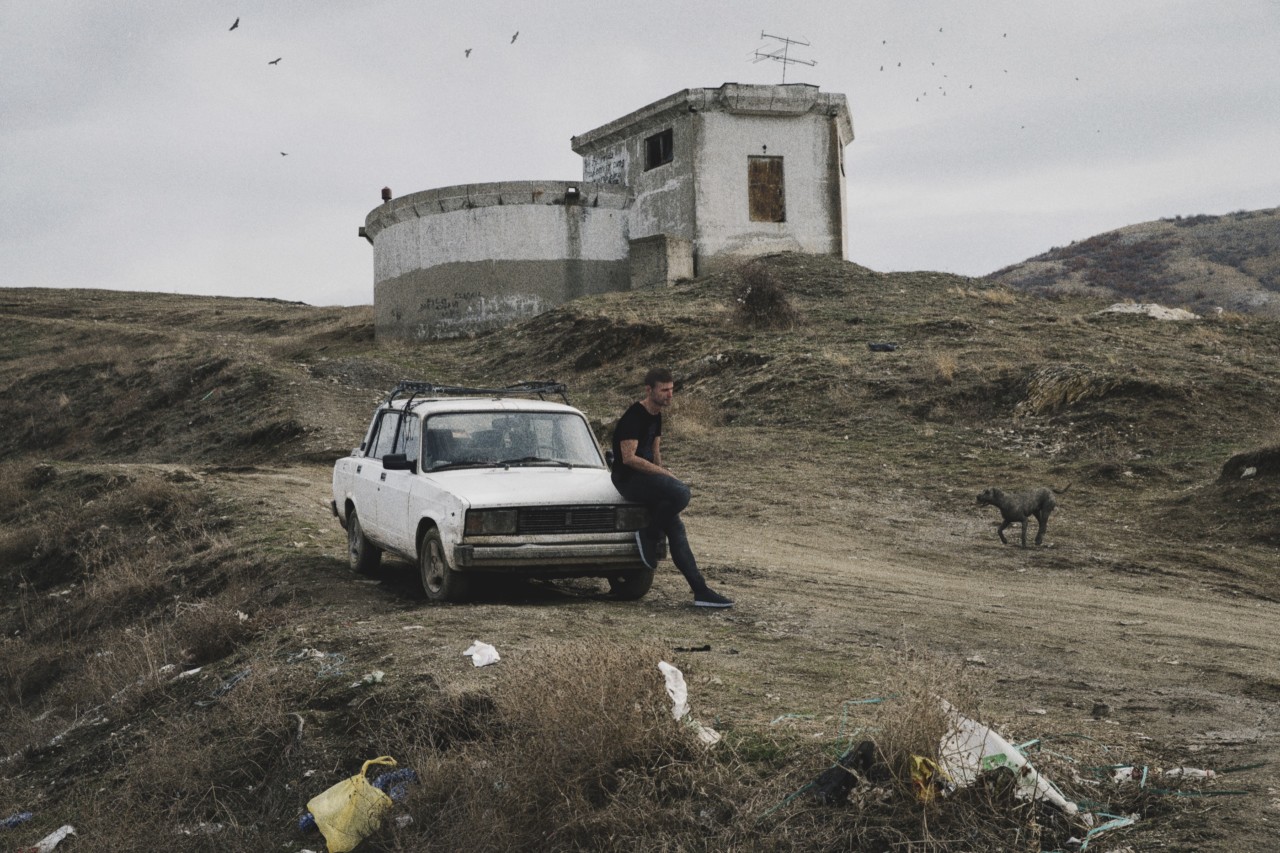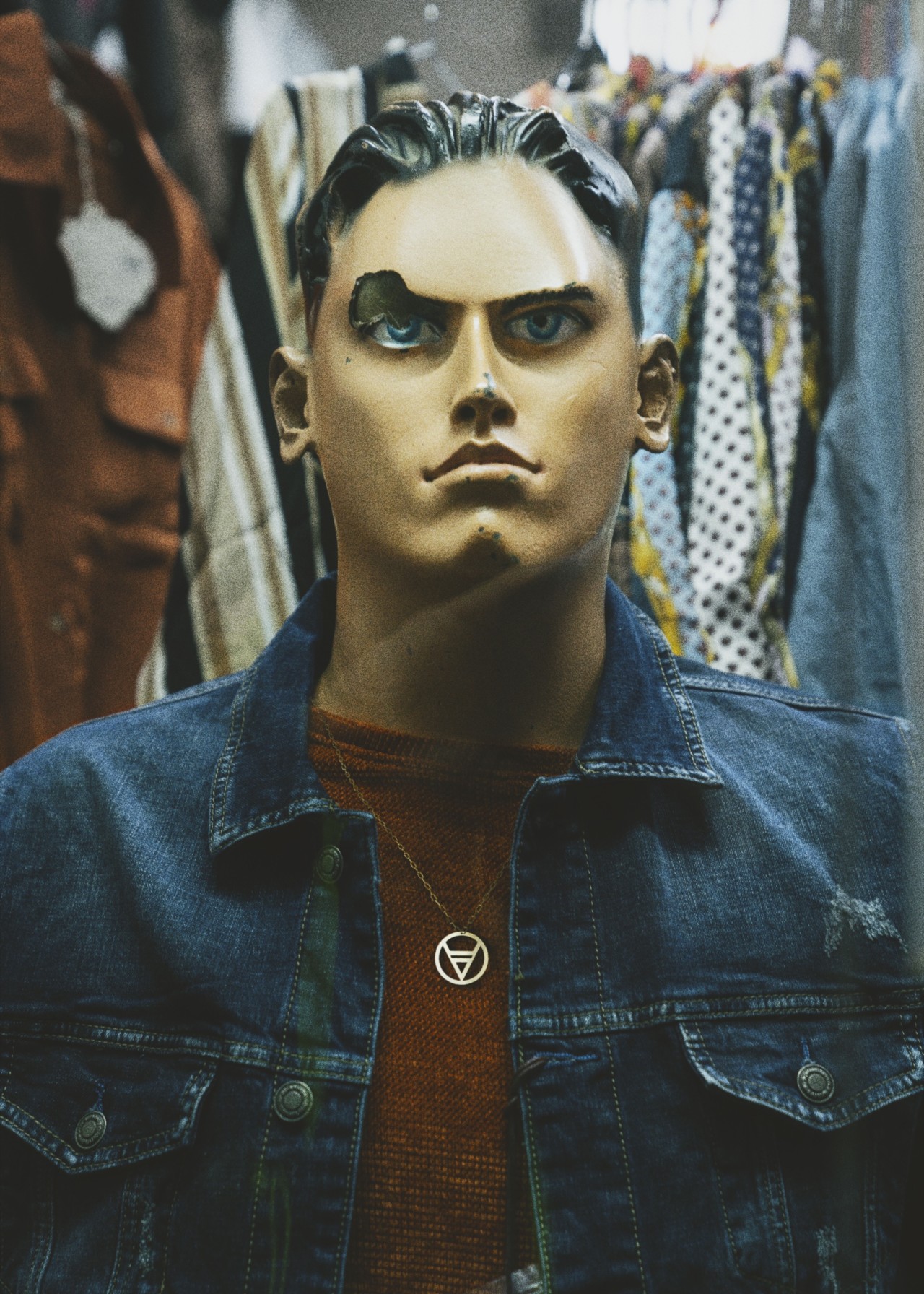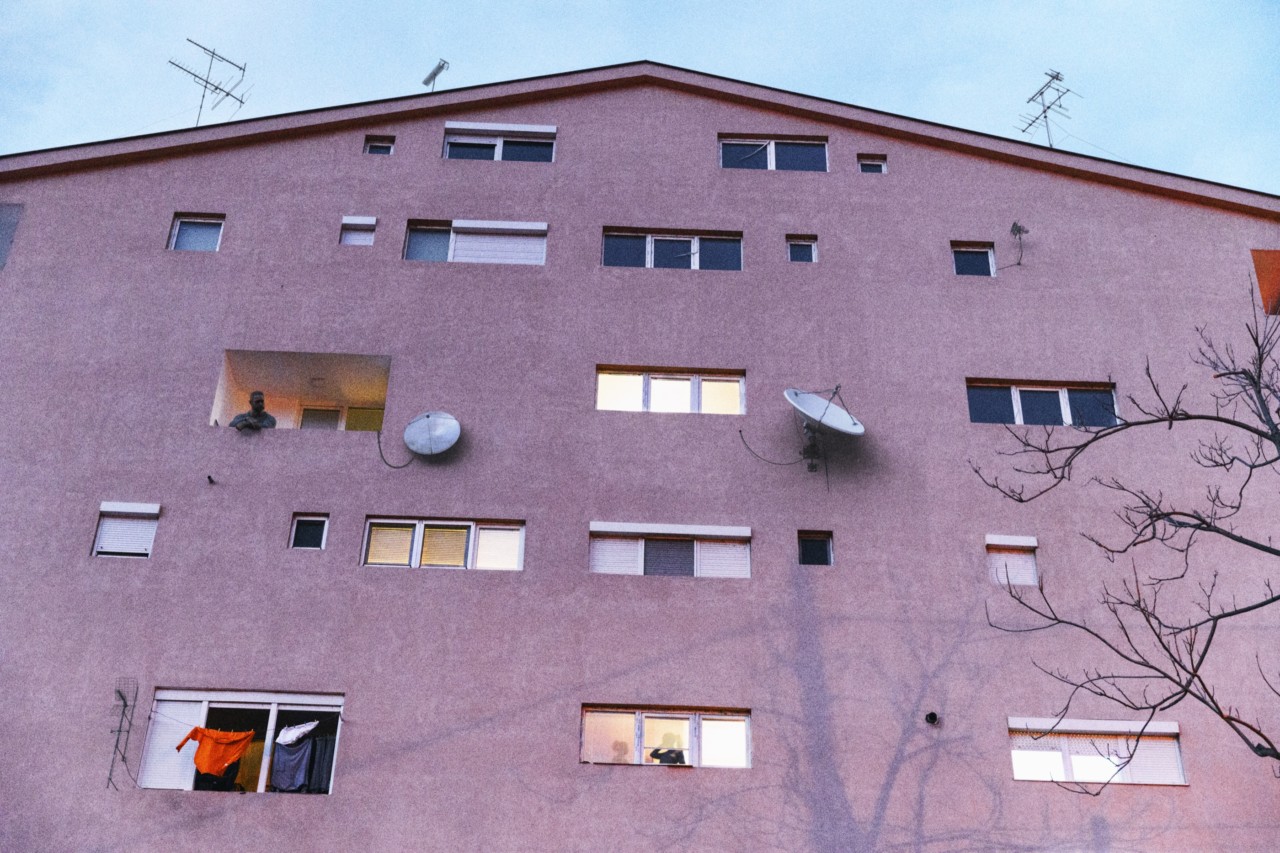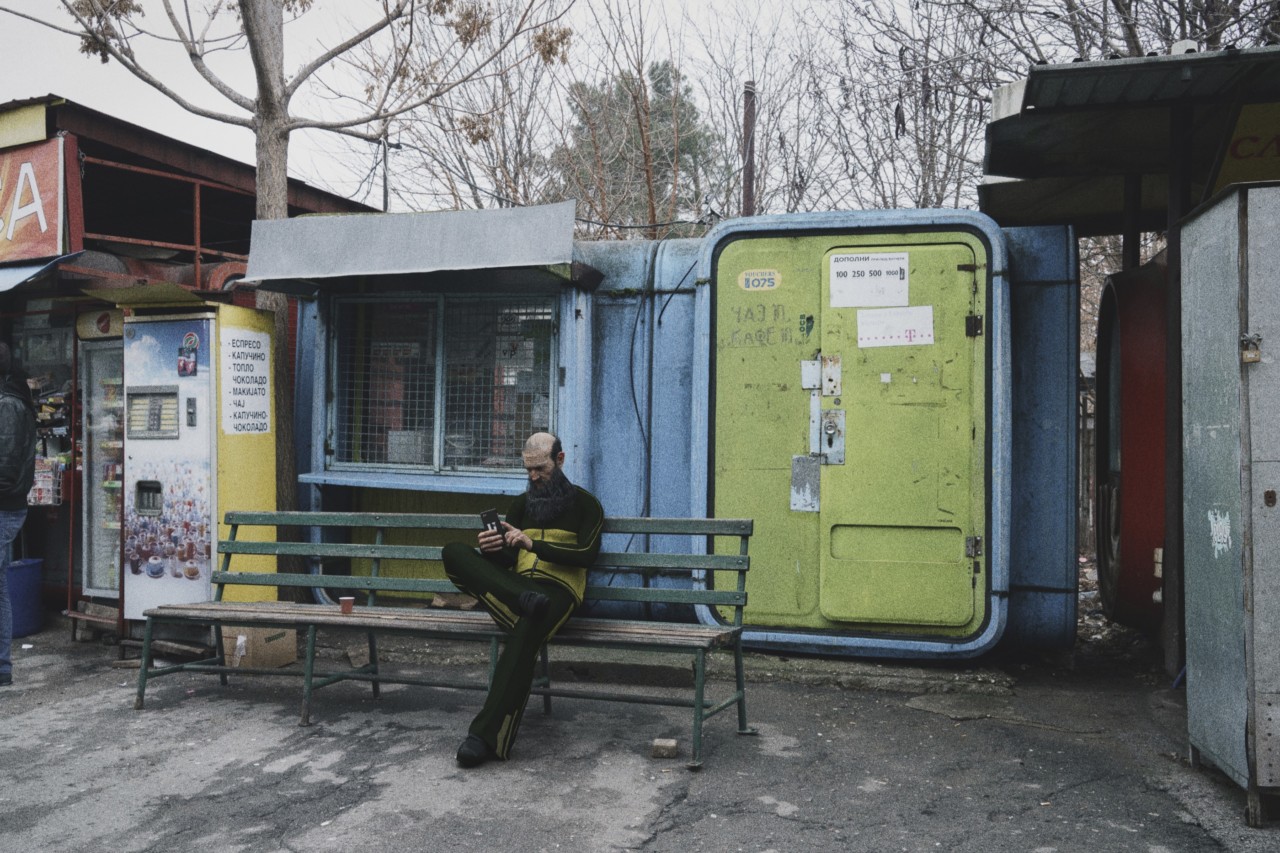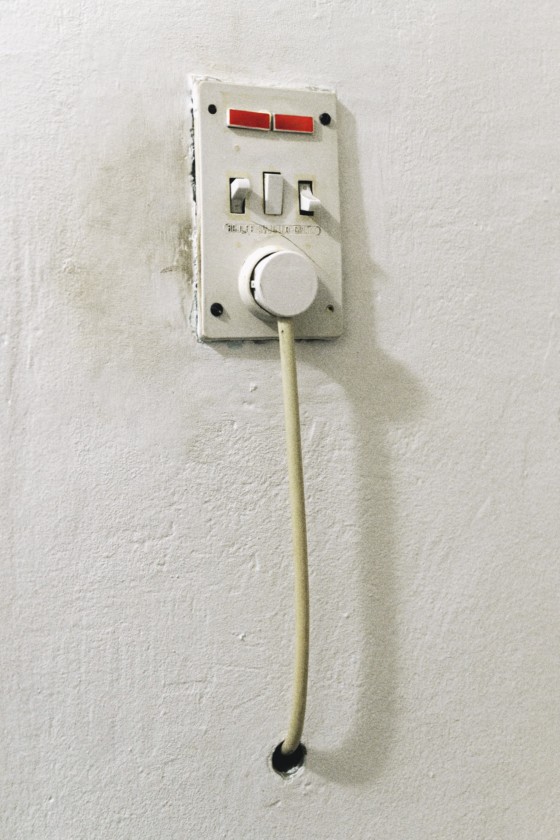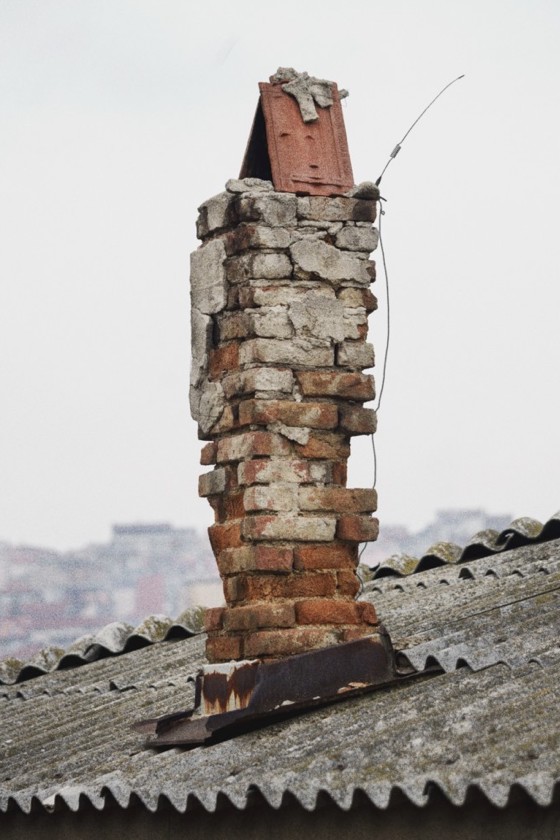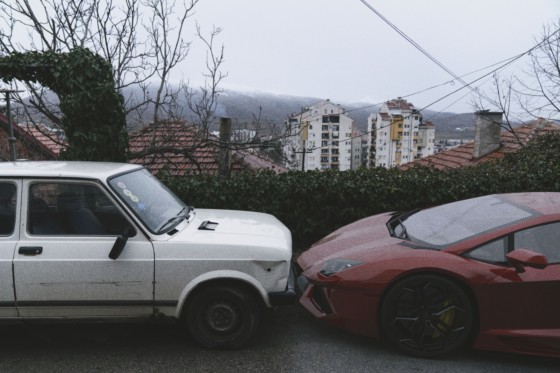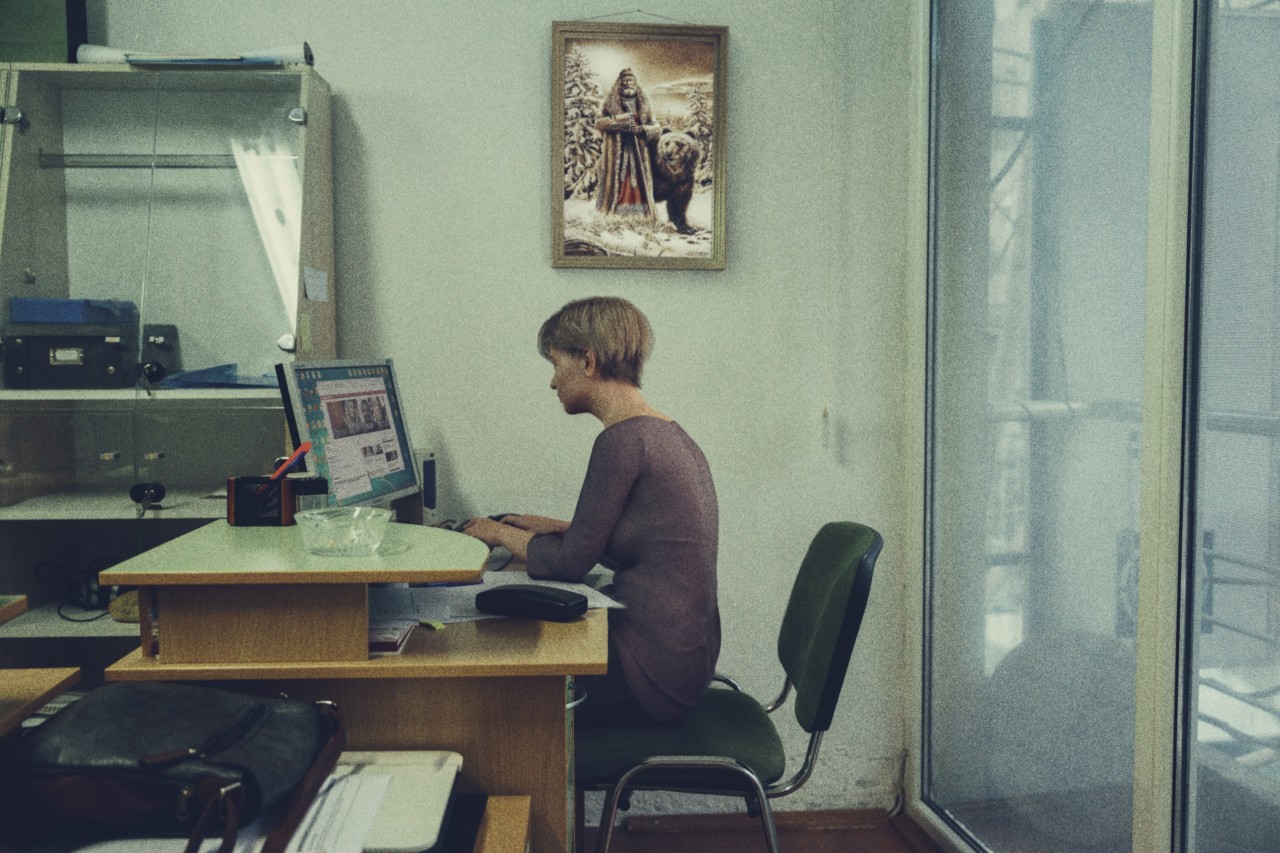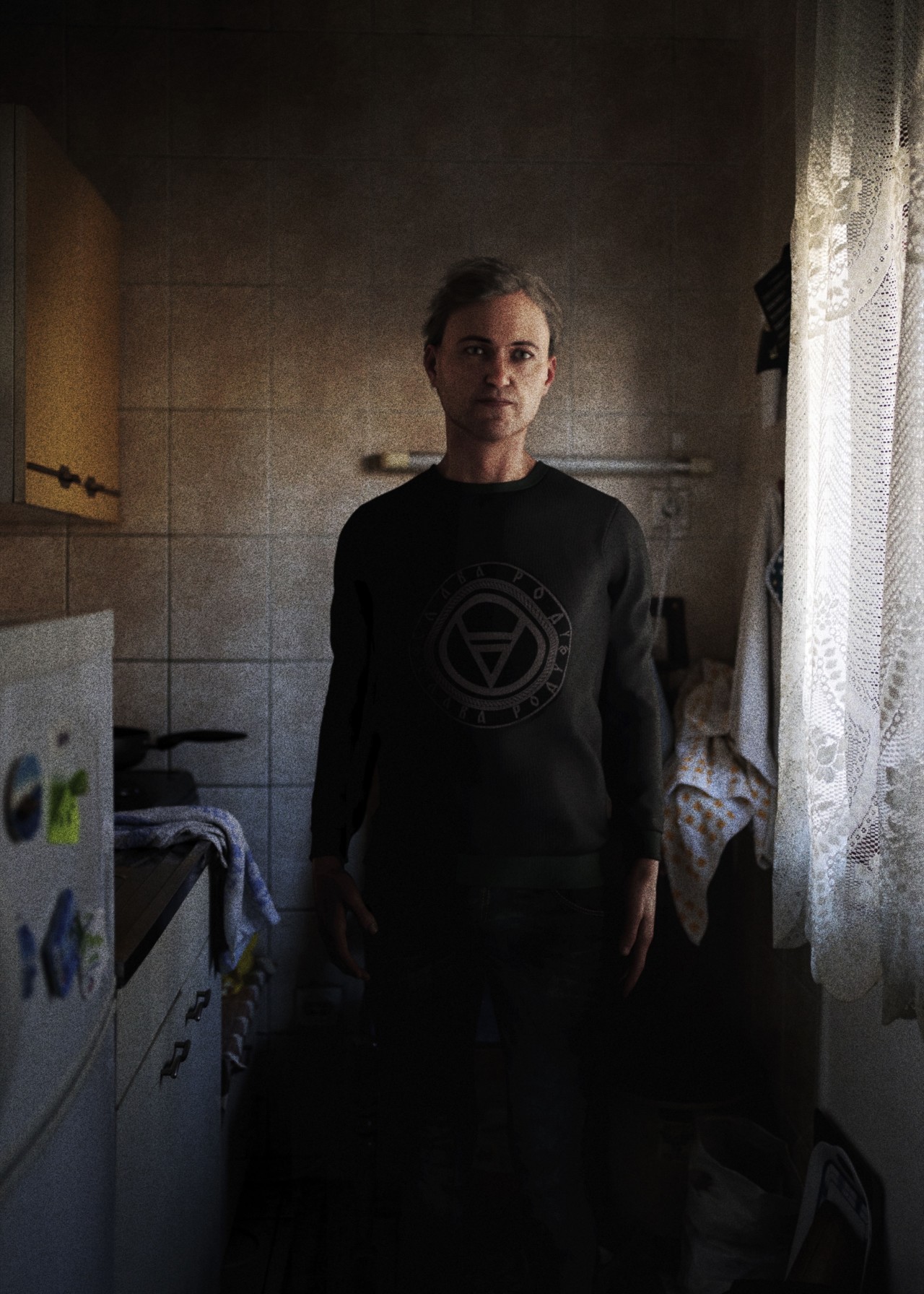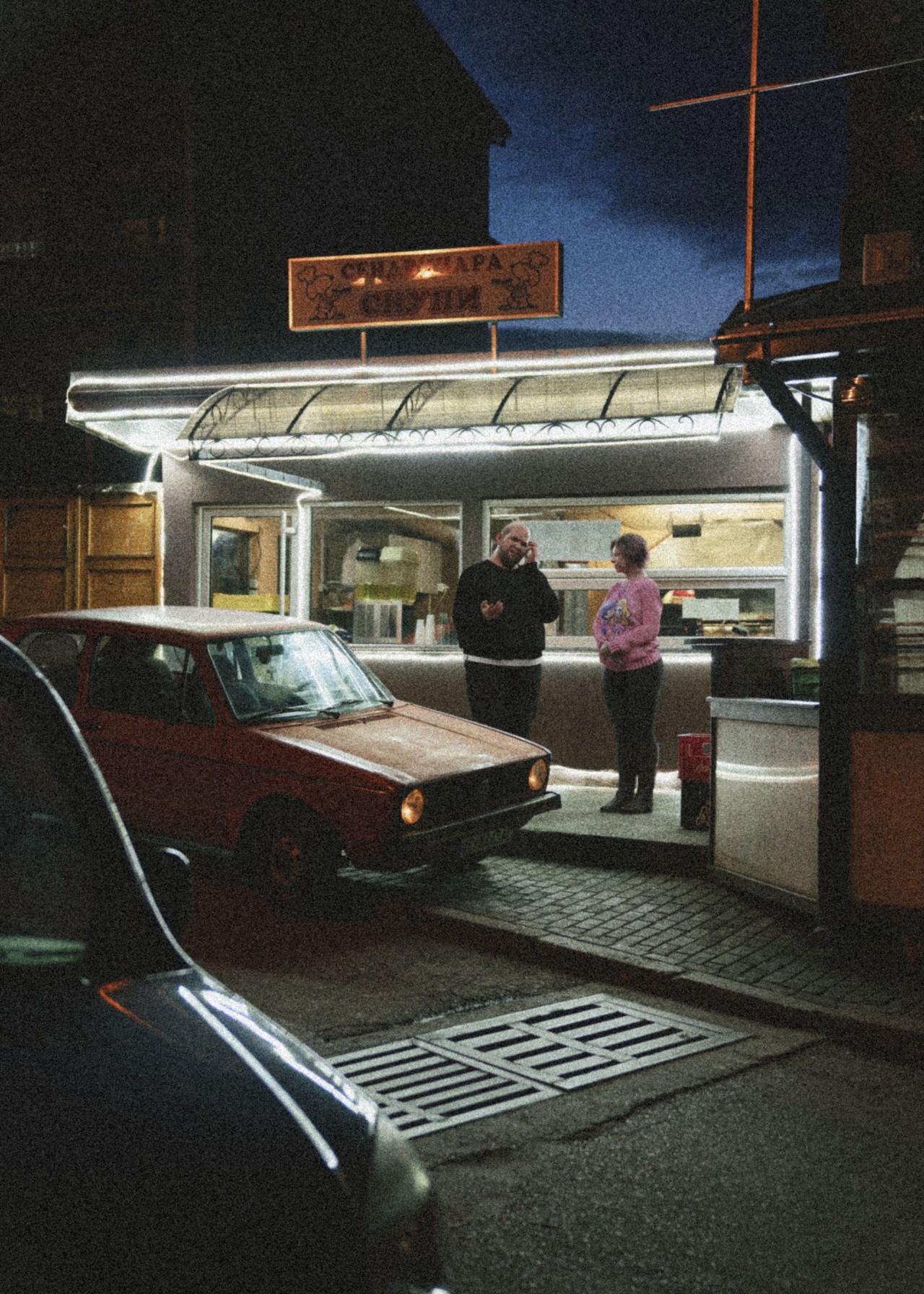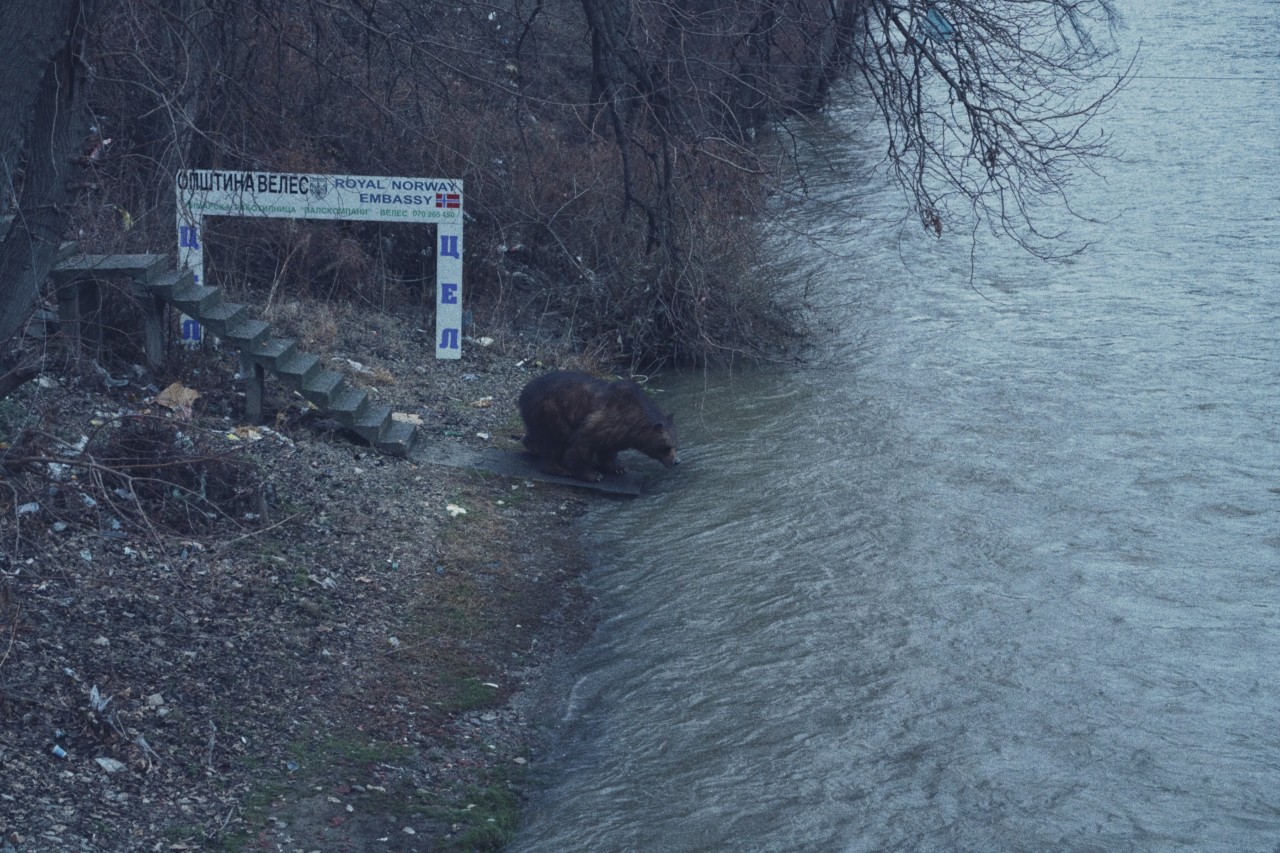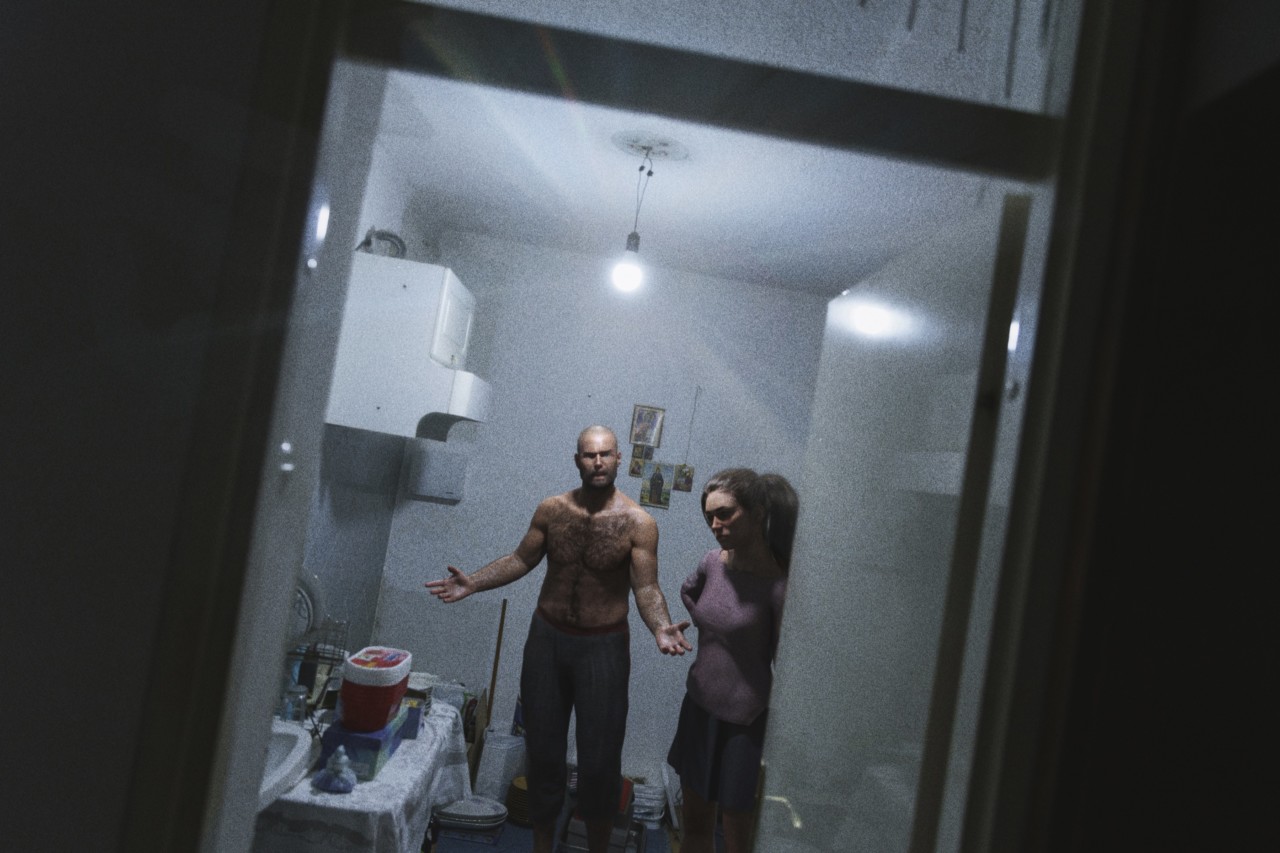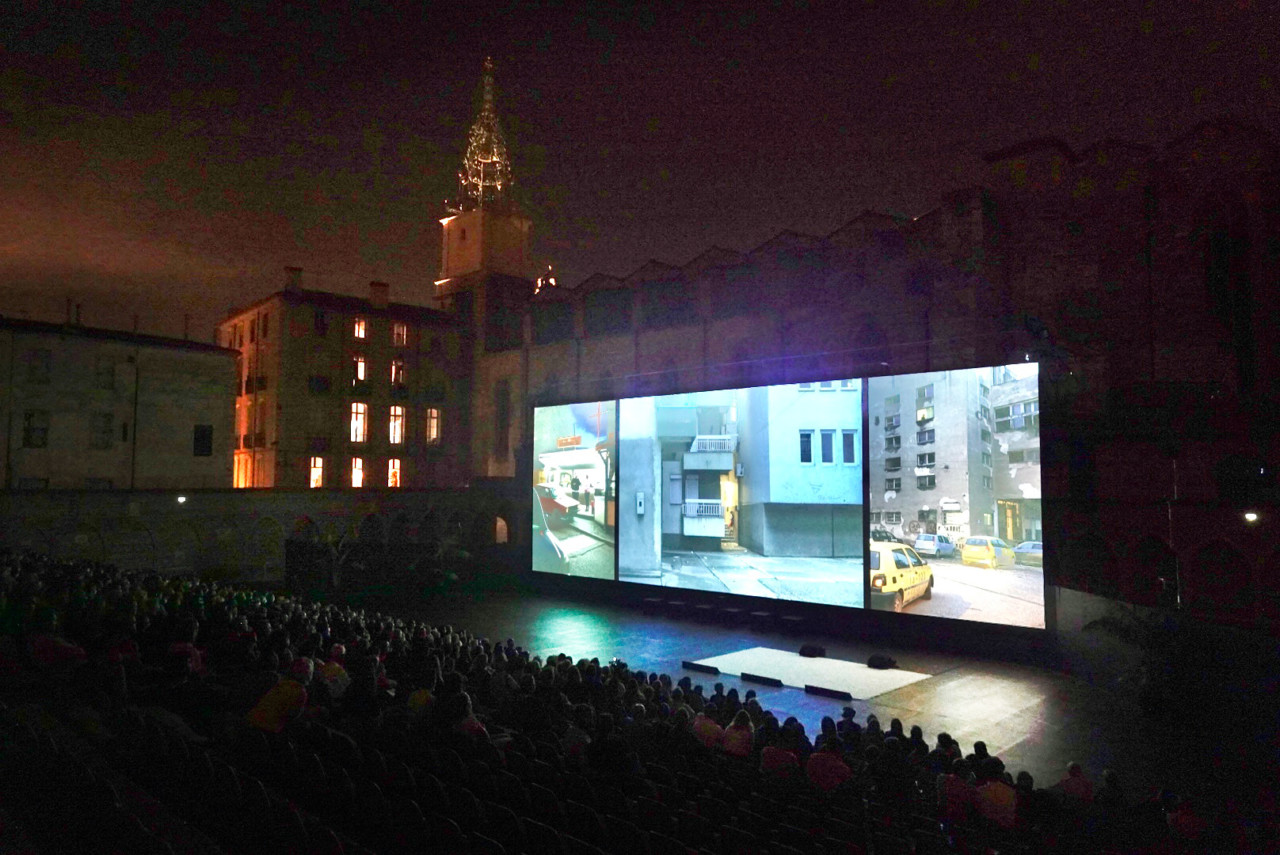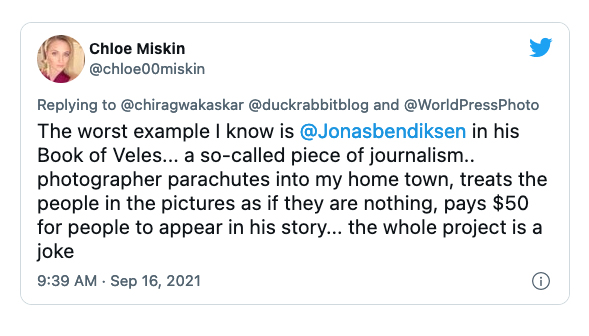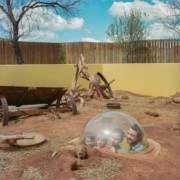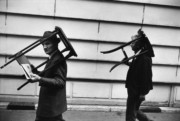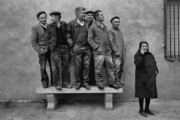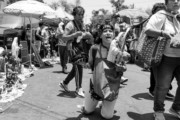The Book of Veles
Jonas Bendiksen explains the many layers of intrigue that went into the creation of his book about misinformation in the contemporary media landscape. Interview by Jade Chan.
Jonas Bendiksen tells the intricate story behind the creation of his most recent publication, The Book of Veles, a project whose unusual trajectory upon release was as bizarre as the subject matter that initially inspired it.
Can you tell us about why you initially became fascinated with the modern town of Veles in North Macedonia?
Throughout the Trump era, I was boiling with frustration over all the lies and misinformation in the media. I was reading about the Russian hacking, the role of Facebook and Twitter, ‘alternative facts’, and how the algorithms worked. At some point I saw a mention that Veles had become this unlikely hub of misinformation, spewing out fake news during the Trump election in 2016.
When people realized that hundreds of fake news websites originated there, lots of big news organizations went there to report. Even Obama mentioned the town. I was fascinated by the idea that teenagers in far-off North Macedonia suddenly played a role in the American political landscape. Their intentions were totally apolitical: these guys just needed to earn some cash, in a town with lots of youth unemployment. They became information hackers because they found a creative way to earn money, more than any wish to create havoc in the US.
The way we now produce, spread and consume information has changed so much in the last 15 years, and this was a terrifying example of that. So I started digging, and found all these other strange layers to the story.
What was the ancient Book of Veles, and how did it impact your project?
I started googling the town of Veles, and quickly realized that the town had a namesake: The ancient god Veles, who was one of the top Gods in the pre-Christian pagan pantheon. In the old myths he was this really sneaky God: a shapeshifter, a God of chaos, magic and deception. So I imagine he would have been quite happy about all the fake news coming out of the town bearing his name.
Stuff like this always gets me interested: when stories start layering up and weaving themselves together in surprising ways.
Reading up on the old Slavic gods, I eventually came across the Book of Veles, a supposedly ancient manuscript found on burnt-out wooden tablets by a Russian army officer, Fyodor Izenbek, in 1919. The planks had inscriptions in a proto-Cyrillic script that took years to decode – but when a Russian scientist named Yuri Mirolyubov finally cracked the code, he discovered it was an epic tale about the early Slavic people and the God Veles himself. This scripture is considered somewhat of a holy text in various Slavic nationalist circles, and also some alternative circles.
"It became absolutely irresistible to try to play around with. What was real and what was fake here?"
- Jonas Bendiksen
But today, most historians and linguists conclude that the entire Book of Veles was a forgery by Izenbek and Mirolyubov.
Later I discovered that the Book of Veles was translated to English in 1973, by a guy at Ohio State University. The translator himself didn’t realize the Book of Veles was a fake, so he peppered it with all sorts of footnotes about the work’s historical importance. Once I got into all this, all my engines started powering up! The myriad layers of chaos and misinformation, all centered around either the God Veles or the town Veles – things that weren’t really related, but still so serendipitously interlinked by name. Now it became absolutely irresistible to try to play around with. What was real and what was fake here? All sorts of people believed different versions of it.
Like with my other projects, photography is always just a tool or excuse for me to dive headfirst into whatever fascinates me at any given time. Here was my chance to grapple with this whole question of where journalism, manipulations, deep fakes, fake news and photography merge – and maybe try to look down the event horizon a bit and imagine where it all might be headed.
"New all-digital technologies are about to wash over us like a tsunami."
- Jonas Bendiksen
How do you investigate, and employ, disinformation through your book?
In the past, digitally manipulated imagery has normally used photographs as its basis – an advanced form of cut-and-paste; you would take one bit of a photograph and cleverly insert it into another.
But today, new all-digital technologies are about to wash over us like a tsunami. In a few years’ time, producing deep-fake videos will be easily done on your mobile. AI-generated portraits (like on thispersondoesnotexist.com) are getting more and more convincing every month, and are already being actively employed commercially. There are Instagram influencers for kids that are just 3D avatars, each one customized to appeal to its target audience. These are a different breed of manipulated imagery because they bypass the camera itself — everything is just generated by the computer chip.
I started to ask myself the question – how long will it take before we start seeing “documentary photojournalism” that has no other basis in reality than the photographer’s fantasy and a powerful computer graphics card? Will we be able to tell the difference? How hard is it to do? How skilled will our own community of photographers and editors be in sniffing out what are deep fakes and what is real?
I was so frightened by what the answers would be that I decided to try to do this myself.
The whole project is really me trying to grapple with the questions of what these new technologies mean, and how easy it is to put them to “evil” use. What does this mean for our understanding of photography as documentation of anything? How easy is it to get people to sing along to a fake tune?
The Book of Veles project became my own little visual Turing test.
"How skilled will our own community of photographers and editors be in sniffing out what are deep fakes and what is real?"
- Jonas Bendiksen
Can you go into more detail about the aspects of the work you fabricated and how you created them? What is and isn’t a forgery in the book?
First, I went on Youtube and quickly learned various software that the computer game- and film industry use to create realistic 3D models of people – avatars you can rotate, light, pose and animate. I bought some base characters and then morphed them in myriad of ways to create a range of different characters. Then I clothed and textured them. Actually I think I’ve spent about 10 times the amount on virtual clothes for my digital avatars than I’ve spent on my own wardrobe in the last years!
Then when I travelled to Veles, I for once didn’t have to spend all my time trying to get access to any people. I just photographed empty spaces, apartments, offices, park benches, and any scene that was of interest to me – and waited for there to be no people in the frame. Then I captured the specific lighting of that particular scene using a special 360-degree camera and some methods from the special FX world. When I got home, I learned how to convert these photographs into 3D spaces, and placed my avatars into the scene, with emotions, poses and lighting that matched the original scene.
I made two field trips to Veles. In a stroke of luck, the last was just a week before all of Europe suddenly shut down because of Covid. So I was really fortunate to have finished the field work. It meant that I ended up with the most perfect project to do as the Coronavirus raged throughout the world, and I didn’t have any other assignments: I basically had a year to sit at my computer, playing with my 3D avatars and fake news scenes. As I dug deeper into it, I added more layers.
Just as digitally generated imagery is developing rapidly, so is AI-generation of text. I found a free trainable system for creating text, called GPT-2, that is trained on millions of real websites. These are systems that are typically used when companies need an automated customer service bot. The thing is you can train the systems further, to match your tone of voice and way of expressing yourself. If you feed the AI with the collected works of Shakespeare, it will spit out quite convincing Shakespeare verse. If you feed it with the King James Bible, it spits out more holy bible scripture.
"The story of Veles being a fake news hub is real. "
- Jonas Bendiksen
To get the text for my book, I fed this system with every article that was reported by English-language media about the fake news industry in Veles, and then had the artificial intelligence write the big 5000-word essay in my book. I didn’t write a single word of it. I just cut and pasted various sequences it invented together so that it had a logical flow.
Then I took all the real quotes from people who had been involved in the fake news production and fed it into the AI, which then produced new statements. That is where all the quotes in the book are from: They are fake, invented by computer, but based on things real interview subjects said.
Creatively it was a bit of a juggernaut. I found one English copy of the translated ancient Book of Veles scripture. But I felt this ancient (forgery of a) text didn’t relate enough to the rest of my material. So naturally I fed the whole ancient Book of Veles into the artificial intelligence, and voilà, I had infinite amounts of computer-invented “ancient scripture” I could supplement it with.
In sum, it became a fake news story about fake news producers. The story of Veles being a fake news hub is real. The story of the Book of Veles’ discovery and forgery is real. But all the actual content is fake. The only thing that is left unmanipulated are the quotes from the Veles fake news websites themselves – which needless to say are themselves mostly ridiculous gibberish.
Do you feel that machine learning, and technology more broadly, has had an overall helpful effect on society’s ability to engage with information?
I am very doubtful of whether all this technology and information is making us any smarter or wiser. I mean, just look around the world, how easily everyone is manipulated either this or that direction. There is just too much information, it is too easy to spread it everywhere, and everyone gets to pick and choose which small fragment of it they want to relate to. Our powers of analysis are not getting better, and we aren’t adept at sorting good data from bad. Yes, social media and Youtube are super duper if I need tips on how to change the diesel filter on my boat’s engine. But for the wider issues, I am pessimistic. This project was for me a sort of test of where things are headed.
Who have you fooled through this project that you are most pleased with?
That’s an easy one: My fellow Magnum photographers. In my experience my colleagues here are normally really sharp and see through a lot of bullshit. The fact that none of my colleagues caught me red-handed was a good measure for me that I was headed in the right direction. Or wrong direction, depending on how you view it all.
Of course I have enjoyed it when people who have bought the book tells me how they enjoyed it, or what an important story I was telling. Obviously I like it when someone posts the book on Instagram saying it is good people are doing serious photojournalism like the Veles story. At the same time, I don’t like scamming people, and like many criminals I have also looked forward to when my cover is blown, so that I don’t have to play the game anymore, and I can be honest again.
"The Book of Veles became my own little visual Turing test."
- Jonas Bendiksen
Several magazines have wanted to run the piece, and I have made up excuses why they can’t have it, as publishing it in a broadly-read magazine would be one step to far, ethically. I felt it was ok to prank my own photographic community, but not the wider world.
I have gotten special kicks out of all the positive feedback I’ve gotten in social media about the essay in the book. Lots of people have commented what an interesting and illuminating text I wrote. Since it was written entirely by artificial intelligence, I was curious if it would pass. This shows that within a short amount of time, we will be surrounded by lots of convincing articles written by bots, and most people won’t be able to tell the difference.
Do you have a message you would say to the real-life residents of Veles, now that you have created this work?
Yes, I hope they are not too offended that I used what happened in their town as a springboard for my machinations. But what exactly are the ethical implication of my work for the residents of Veles, considering that all the people in my story are digital avatars? What obligations do I have towards people I didn’t actually photograph? It’s a tricky question that will be relevant in the years to come.
I hope on balance the people of Veles see it as fair play: A bunch of their youngsters made up lots of ridiculous fiction about a far-away place, the USA, and benefited from that. And I came from a far-away place and made up some fiction in return about them, but based on a true story. I intended no harm, and I found Veles a very nice and friendly place. I didn’t actually meet a single person who was connected to the fake news industry, nor did I try. Anything I know about the fake news business in Veles is second-hand through the media.
I have planned all along for the truth about my project to get out, so it was never meant to be a lasting lie. The book is full of breadcrumbs that were meant to lead to the cat getting out of the bag soon enough.
What similarities could you draw between image-making with a lens and image-making using a computer?
I learned a lot about my own photography through creating these fake pictures. I’ve never been very good with lighting scenes – but here I had to move virtual lamps around my own 3D scenes and create the right light for my digital people. The process forced me to look with fresh eyes at the real world. I would stand behind a guy in the supermarket queue, and just stare at his hair…. “What exactly is it that makes his hair look so … real?” What details of texture and lighting do I need to simulate?
To make the images, I basically had to build a bunch of Jonas Bendiksen cliché pictures from scratch. I wanted the end result to look like I got to Veles, had a couple of weeks with moderately good access, and did a standard operating procedure photojournalism piece… and then bashed out an arty book from it. So for each scene I had to think, well, how would Jonas photograph this scene if it had people in it? And then I had to build up the scene, piece by piece, pose by pose, like I was playing with Lego.
"I figured I needed to orchestrate an attack on myself and The Book of Veles."
- Jonas Bendiksen
I kind of went overboard sometimes, which was a lot of fun. According to the legends the ancient god Veles was a shapeshifter who took the form of a bear. So in the book, I put in a bunch of pictures of 3D bears wandering around the outskirts of town, so that the god Veles could be seen in the story. I got to be a National Geographic wildlife photographer without having to wait for weeks in the bushes.
What kind of impact do you hope this project might have on the world of journalism? Does such a project undermine the genre of photojournalism, or in turn, photography as a whole?
I think in the short term, seeing that I have lied and myself produced fake news, I have in some way undermined the believability of my work. But I do hope that it will be seen as one step back, two steps forward – and that this project will open peoples’ eyes to what lies ahead of us, and what territory photography and journalism is heading into.
My hands have been bound since the book came out in April. I’ve been sharing the material on my social media channels, and the book has sold well. But I’ve been careful not to let other media run it as a feature. I also haven’t released the book into the Magnum archive until now, as I didn’t want the Magnum team to accidentally sell the work under a false flag.
But you submitted the work to Visa pour l’Image, the biggest festival of photojournalism, in Perpignan, France?
I was surprised that none of my photo colleagues questioned anything about the book. So I needed to test if these doctored images really can pass through the most discerning filters. I sent both the entire image series and the full resolution PDF of the book itself to the Visa pour l’Image festival. When they came back to me and offered me an evening screening on the festival program, I felt very conflicted. I felt terrible because I was not being honest with them. On the other hand, I felt going through with this could be very important for photojournalism and our industry.
If computer-generated fake news pictures are accepted by the curators who have to pick the highlights of all the year’s best photojournalism, it shows that the whole industry is quite vulnerable.
The big tech companies regularly recruit top-level hackers, even criminal ones, to try to break into their systems. They are called penetration testers. They are paid top dollar to hack as much as they can and search for weaknesses in company’s system architecture, so that they can go fix the loopholes and protect themselves against being taken advantage of. I guess I see what I did as a similar service for documentary photography and photojournalism, just on a volunteer basis.
I felt that while I couldn’t publish in mainstream media channels, having it screened at an industry festival was legitimate. Even so, I do want to publicly apologize to Jean-François Leroy and the good people of the Visa festival. They are doing an important job – even if it turns out they, like all of us, need to be more on the alert for fake news.
How closely did you plan the reveal of the truth behind the project?
When I released the book in April, I thought someone would challenge it within a few weeks. When that never happened, I decided to help people along by stirring their suspicions.
Fake news generally spreads through social media, so I figured I needed to orchestrate an attack on myself and The Book of Veles there. I went online and bought a pre-aged fake Facebook profile. Her name was ‘Chloe Miskin’ and cost about $40. The guys I bought her from claim that her profile pictures are AI-generated. I have no idea if that is true. You just pay the money, and you get whomever you get.
I managed her infiltration into our photographic community. Within weeks, she was friends with over 600 photo editors, photographers, curators and other industry people.
As soon as the Perpignan screening was over, I wanted to bring out the truth as soon as possible. Within 24 hours, I let fake Chloe loose on Facebook with grave accusations that I was paying my subjects to appear in the pictures (which was of course true, in the sense that I had bought the 3D avatar base models). My aim was to draw people in to have a closer look. I thought everything would be over in a matter of hours. Much to my surprise, nobody took the bait, and they even started defending my alleged conduct.
I realized I was in the wrong place and had to quickly establish some new fake trolling profiles on Twitter.
Twitter-Chloe started tweeting similar accusations about how I paid for subjects. After some initial outrage, Benjamin Chesterton, aka Duckrabbit, found a chink in my armor, and spotted that one of the fake account’s profile pictures was an outtake of a woman that actually appears in my book, wearing the same clothes.
I was greatly relieved to have arrived at this point. And I want to say well done to Duckrabbit; I thank you for helping extract me from all my lies, and letting me go back to life as an honest citizen! I will send a signed book.
It might be quite instinctive that the reading that people take from the work is one of skepticism. In actual fact, the project arises from your curiosity and enthusiasm for discussing the questions that you believe are important around photography today. What’s been the most exciting and hopeful thing you have learnt from the whole process?
My hypothesis all along was that if one averagely nerdy freelance photographer can put this together in his basement office, then we’re all in for a heck of a ride. So I guess the optimistic perspective would be that we are headed into a minefield, and it is good to have a bunch of warning signs posted up before we step into it.
—
Signed copies of the The Book of Veles are available from the Magnum Shop here.


